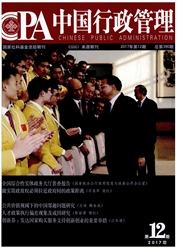

 中文摘要:
中文摘要:
加强协调是当前世界各国应急管理工作的共同要求和重要趋势。本文考察了新中国成立以来我国应急协调机制的演变轨迹,并把整个过程划分为由个别非常设机构进行辅助性协调(新中国成立至改革开放初期),由大量议事协调机构牵头协调(改革开放初期至2003年),由政府应急管理机构和部门间联席会议制度牵头协调(2004年至2008年),地区之间、部门之间、军地之间进行自主式协作(2008年之后)四个阶段。我国应急协调机制的未来发展走向是从强制性协调到自愿型协作、自主式协同转变,提高应急协调机制的稳定性、长期性和可持续性。
 英文摘要:
英文摘要:
Transboundary cooperation on emergency management is not only necessary, but also beneficial. By the method of historical analysis and documentary analysis, this article examines the evolution and development of emergency management coordination structure in China. The ongoing process could be divided into four stages: management by categories by central agencies and coordinated by several ad-hoc emergency organizations (from the foundation of P. R. China in 1949 to the initial stage of reform and opening up), coordinated by various advisory and coordinating emergency organizations (from the initial stage of reform and opening up to 2003), coordinated by standing government emergency institutions and inter-agency joint conference systems (from the initial stage of reform and opening up to 2008), and increasing voluntary coordination among regions, government agencies and civil-military sectors (after 2008). As moving from obligatory to voluntary, long-term sustainability should be assured for the Chinese emergency management coordination structure.
 同期刊论文项目
同期刊论文项目
 同项目期刊论文
同项目期刊论文
 期刊信息
期刊信息
